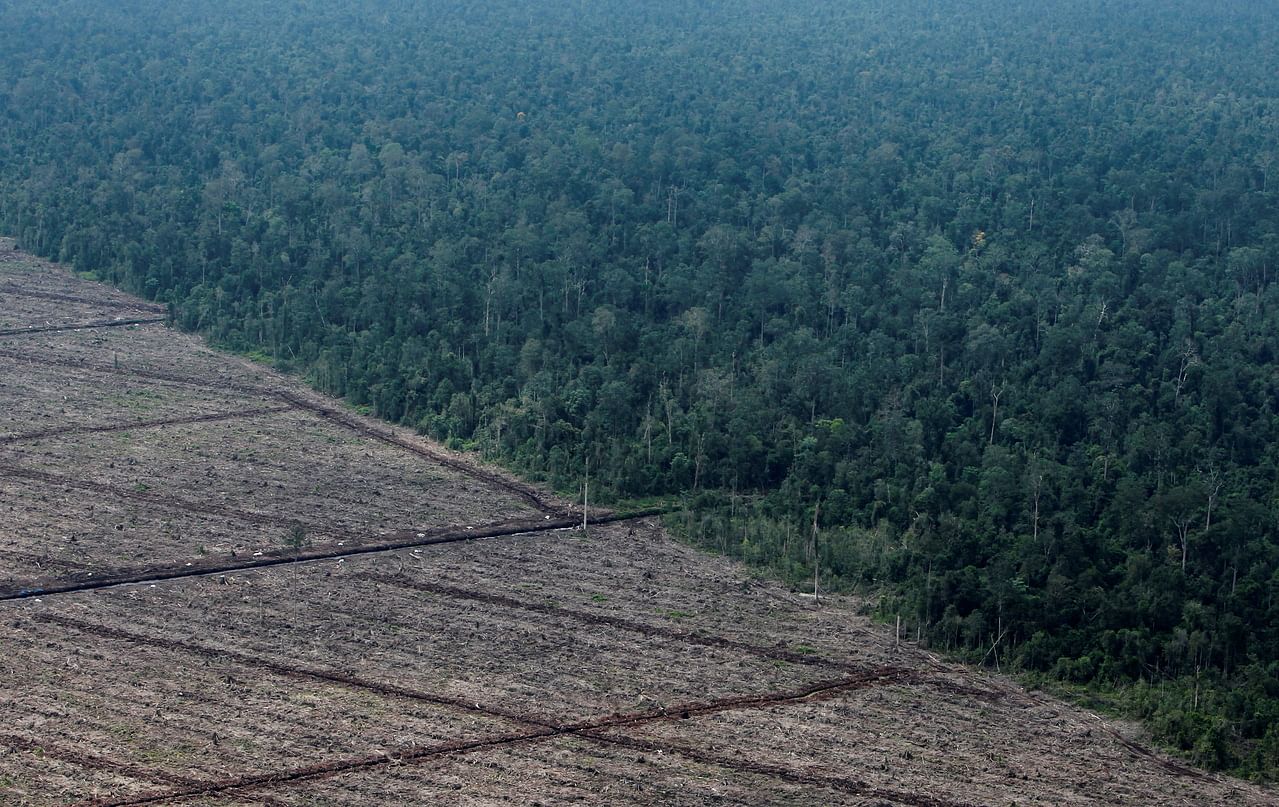Benefits of conserving a forest go beyond capturing carbon
Sign up now: Get ST's newsletters delivered to your inbox

Research has found that by protecting forests in South-east Asia, people living in or around the forests can benefit.
PHOTO: REUTERS
Follow topic:
SINGAPORE - Conserving a forest is becoming increasingly attractive to land developers, as more companies and countries eye such projects as sources of carbon credits to offset their emissions.
And a new study by researchers at the National University of Singapore (NUS) has found that by protecting forests in South-east Asia - which is home to many small communities and villages - people living in or around the forests can benefit.
For example, since a healthy forest hosts a diversity of wild pollinators such as bees or butterflies, agricultural communities around the forest could see an improvement in their crop yields.
A healthy forest contains plants, microbes and other organisms that are efficient in absorbing and retaining minerals. As a result, these habitats can help reduce the amount of nutrients flowing into freshwater streams.
This helps improve the quality of water flowing downstream, reducing the need for added treatment of potable water, said researchers from the NUS Centre for Nature-based Climate Solutions.
And as bastions of tropical biodiversity, forests provide homes for iconic wildlife of the region such as orang utans, enabling these forests to be an ecotourism draw.
Dr Tasya Vadya Sarira, a postdoctoral researcher at the centre and lead author of the study, said: "We've always seen natural climate solutions through the lens of carbon, recognising them for their ability to take in carbon dioxide. But we also know that there is more to the forest than just that."
Carbon dioxide is the main greenhouse gas driving climate change. Trees have the ability to capture the heat-trapping gas in a process known as photosynthesis, which locks the carbon in tree biomass such as trunks and roots, and produces life-giving oxygen.
For every unit of carbon dioxide stored by a forest that has been saved from destruction, one carbon credit can be sold. Emitters elsewhere can buy these credits to "offset" their own emissions.
In the study, the researchers sought to determine where carbon-rich forests in South-east Asia could be protected as conservation projects so that the co-benefits - including pollination services, water quality improvement and biodiversity havens - can be reaped.
They found that out of the 196 million ha of tropical forests in the region, about 107 million ha - almost six times the size of Malaysia - could deliver at least one co-benefit, in addition to curbing the amount of carbon in the air.
The study was published last Thursday in scientific journal Nature Sustainability.
Said Dr Sarira: "Quantifying the co-benefits is the first step to help bring awareness to the inherent value of these forests at risk."
Information on the co-benefits could also be useful in helping to plan and design future carbon projects.
For the study, the researchers first determined sites in South-east Asia where a profitable carbon project could be located.
Only forests deemed to be at high risk of deforestation can qualify as a source of carbon credits. Otherwise, money would be spent conserving a forest that was not meant to be cut down in the first place.
Then, there is the question of whether saving a forest from the chainsaw could be more profitable than, say, converting it into an oil palm plantation.
Based on a carbon price of US$5.80 (S$7.80) per tonne of emissions, the researchers found that 114 million ha of forests in South-east Asia could be protected as viable carbon projects. A higher carbon price would increase the forest expanse that is worthwhile for developers to conserve.
The researchers then overlaid this map of viable forest carbon projects with other maps that detail pollination services, water quality regulation and key biodiversity areas. These are based on publicly accessible data compiled by other research groups.
The researchers found that in South-east Asia, 107 million ha of forests could deliver such benefits.
Researchers found that conserving this amount of forests would serve the dietary needs of an equivalent of more than 300,000 people across the region every year.
On top of that, the forests could also retain 78 per cent of the volume of nitrogen pollutants in watershed areas every year, and safeguard 25 million ha of key biodiversity areas.
These areas are internationally recognised as important for biodiversity, for example, in terms of the number of species they host.
Professor Koh Lian Pin, a conservation scientist and director of the NUS centre, said: "This study shows that nature-based carbon offsets are important for not only climate change mitigation, but also the many other benefits they deliver to society. The study also highlights the need to put a more appropriate price on carbon offsets that reflects their multiple values."
Ms Charley Roberts, an associate at advisory firm Global Counsel's climate and sustainability practice, said governments and private actors are increasingly setting out specific additional criteria beyond carbon. They are using these criteria to screen the types of projects they invest in.
She said: "Quantifying the range of benefits created by nature-based solutions can also provide further points of differentiation in the market, and ideally lead to more thoughtful project design to ensure these multiple benefits are achieved."

